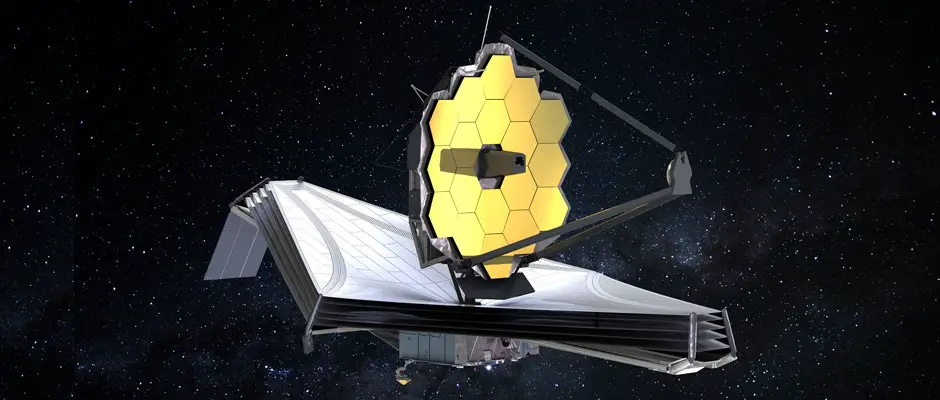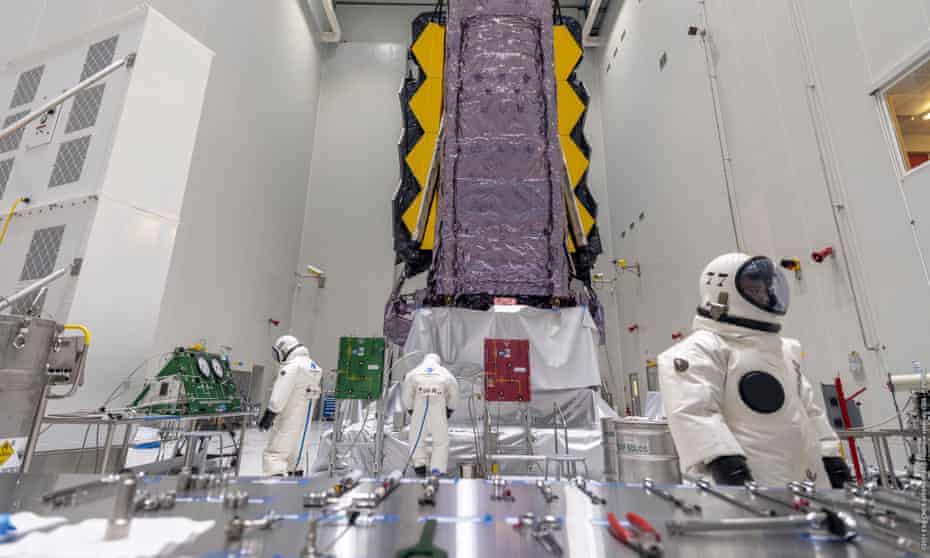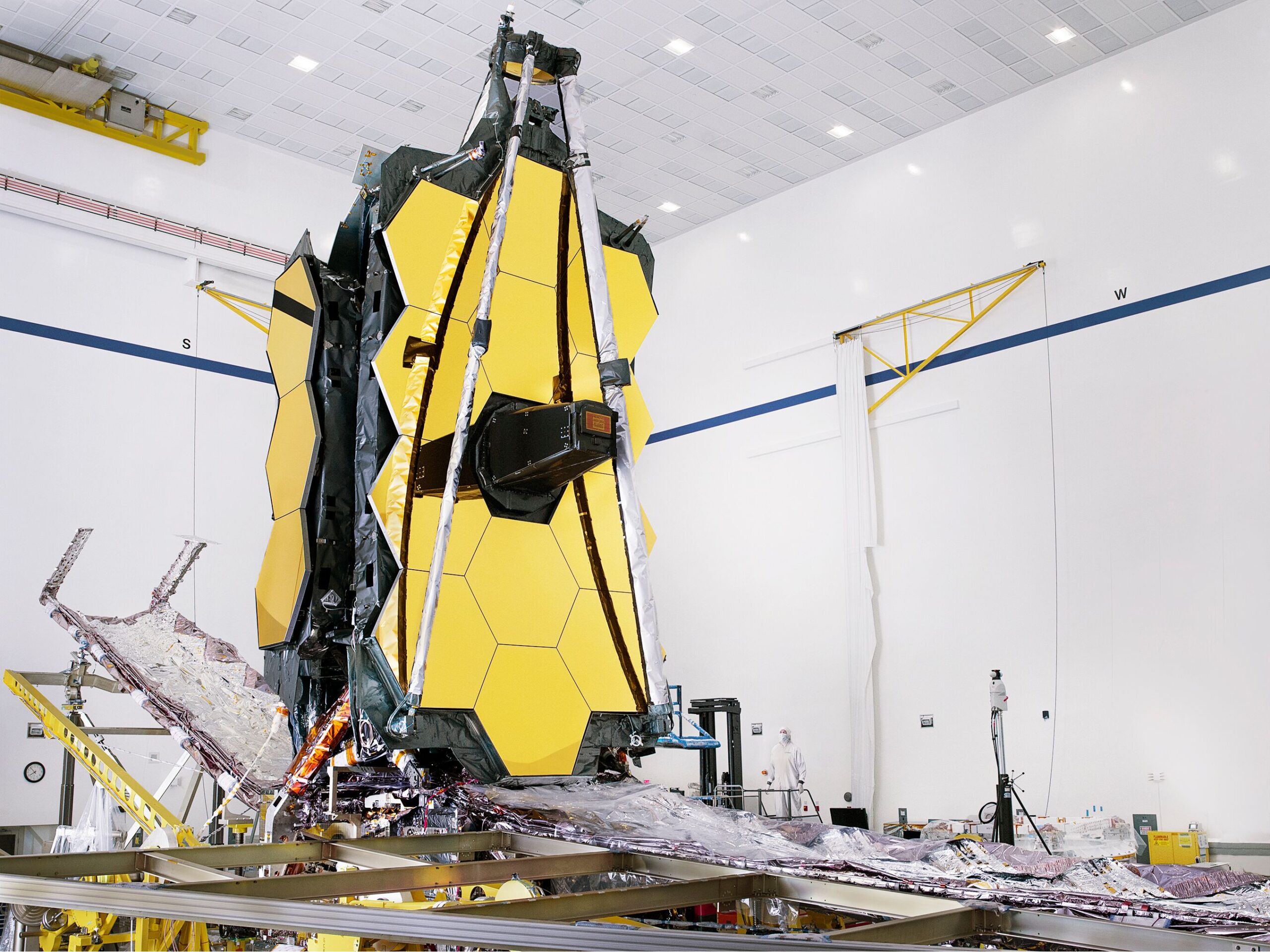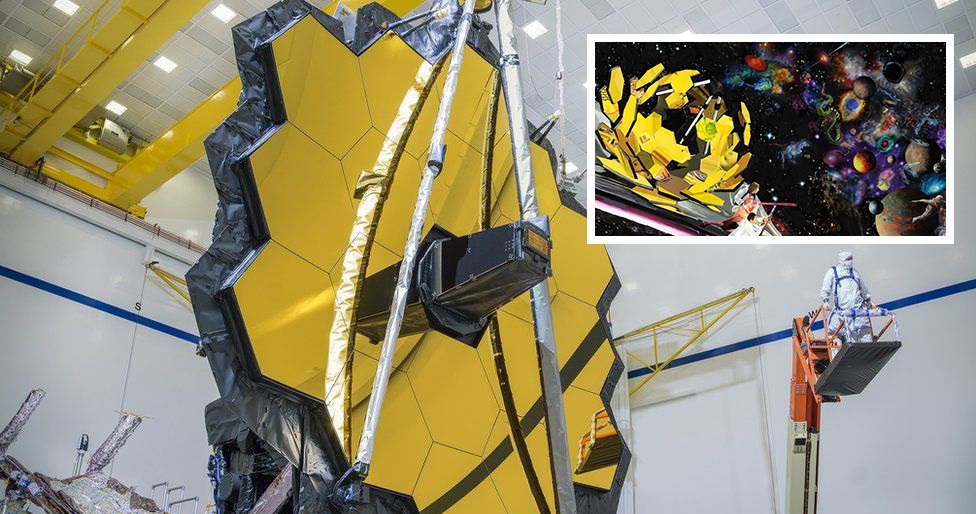Origami, according to the Japanese, is an expression of reverence for nature’s splendor. It is a creative reinterpretation of an original concept. If you think about it, the James Webb Space Telescope will be doing just that in the coming days.
It is too enormous to put on a rocket, therefore on a vast scale, it will be folded to launch it into space, and once there, it will unfold, revealing all of its enormity. For 32 years of hard effort, it took 40 million hours to produce, a sheet of paper that bends in a matter of minutes.
Deployment and installation are finished in six months after the satellite has been placed in orbit.
Once it departs from the rocket and starts its voyage into space, there will be no way to fix any of the hundreds of minute elements that make it up: hinges, motors, springs, wires, and even mirrors, a sun visor, and the antenna. In all, there are 344 key times when a mission costing more than $10 billion in resources might be jeopardized. Because they have tried and rehearsed everything several times, they are confident despite the possibility of failure.
In light of its severity, its introduction has been postponed more than three times since the beginning of 2019. In Kourou, French Guyana, the current information indicates that it will take place on Wednesday, December 22, however, this has been postponed until Thursday, December 24, owing to a communications issue.

What is it?
An international collaboration between the European Space Agency (ESA) and the Canadian Space Agency is building the James Webb Telescope, which will be the most expensive observatory in space science history and be named after a former NASA administrator. The telescope will involve thousands of engineers, hundreds of scientists, and more than 300 universities and organizations from 14 countries.
It will allow us to journey back in time to the beginning of the universe when the first galaxies were formed and stars were formed from dust clouds, and it will encourage the hunt for indications of life on planets beyond the Solar System. Solar. You will learn about the history of the universe, as well as our own galaxy.
What is your mission?
For the first time, it will explore a previously unexplored area of the universe. Astronomers may investigate the creation and development of stars and galaxies, as well as the Solar System’s planets and other bodies, using NASA’s newest telescope, the Hubble Space Telescope, which is expected to be operational by the end of 2017.
Scientists want to learn more about the chemical makeup of exoplanet atmospheres by analyzing the starlight that passes through their atmospheres. You will spend around 20% to 25% of your time examining about 60 or 70 exoplanets and their atmospheres, structures, and compositions.
Both the NIRCAm camera and the Miri instrument will be able to see far things, while the NIRCAm camera and Miri will be able to see closer items, such as water, carbon dioxide, and methane on Earth. minerals as well.
How will you do it?
According to NASA scientist Jorge Nuez, the light operates like the sound of an ambulance. When it is far away, it sounds like an ambulance, but when it is near, it changes. This is how the light works, he says.
Invisible and infrared light, released by the earliest bright objects, travels enormous distances and redshifts to reach researchers in the present day.
That is what the Webb will enable us to do: “understand those initial stars, galaxies, investigate exoplanets since till now we only know, due to a technology called transit… but the Webb will allow us to detect them with greater precision to extract their spectra and know their composition,” he says. In addition, it will allow us to better see Neptune and Uranus and their moons inside our Solar System.

Because it is special?
There is a 60-fold increase in the size of the mirror compared to the previous NASA telescopes, allowing it to capture more light and, as a result, more detail and improved sensitivity and resolution with its 6.5-meter focal length. A total of 18 gold-plated hexagonal segments of 1.32 meters in diameter were used in its construction.
To fit inside the rocket, they had to construct it as a series of folding and moving elements that could fit within 5 meters. I will be using four infrared equipment (NIRcam; spectrometers; NIRISS; and MIRI) that will need to be kept extremely cold to perform effectively and not detect the same emissions from the telescope and the Miri. 366 degrees Celsius should be less than 7 Kelvin.
The latter is expected to be the coolest imaging device ever used in orbit. You will use a tennis court-sized parasol to shield the instruments from the sun’s rays; this will serve as a passive cooling mechanism.
Despite the fact that the mission is supposed to continue for five years, the gadget will be able to stay functioning, although silently, for a minimum of 10 years.
Despite the fact that it will be at Lagrande 2 (one of the five points in space where the gravitational attraction of the Sun and Earth balances the centripetal force required for a spacecraft to move with them), the fuel to stay in orbit will require a few corrections that will gradually use up its fuel supply, says Macarena Garcia Marn, a Spanish astrophysicist from the European Space Agency to the Sinc agency.
What to expect on the 24th?
In a nutshell, the observatory will be launched from French Guyana and placed in an orbit of 1,609,344 kilometers above Earth assuming it is not delayed again. During this time, all systems will be deployed, reviewed, and commissioning will commence, and they will be ready to go into operation after six months. The Deep Space Network, a network of gigantic antennas controlled by NASA’s Jet Propulsion Laboratory, will provide continuous communications to and from the spacecraft. Visit jwst.nasa.gov to learn more about the launch and see it live.
The Hubble replacement?

Garca Marn clarifies that while it is referred to be Hubble’s replacement, it really serves as a support to the space telescope. Unlike Hubble, Webb focuses only on the infrared spectrum and does not cover the visible spectrum at all. If you are looking for something that is more sensitive, more powerful, and bigger, this is the best option for you. While Hubble can have its equipment fixed and changed while in orbit, Webb, which is so far away, cannot be repaired or changed since no human will ever go that far.

